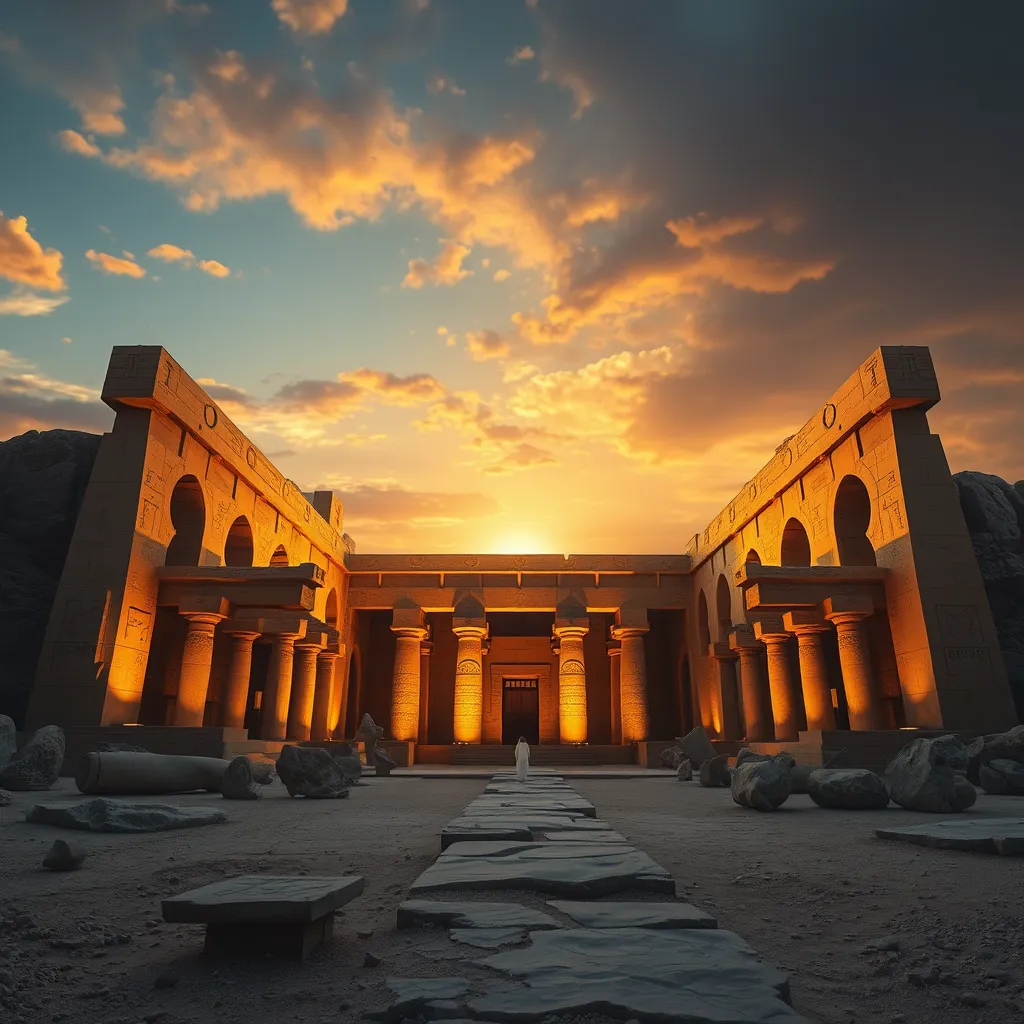Ancient Stones, Eternal Stories: The Temples of Egyptian Mythology
I. Introduction
Egyptian mythology is a rich tapestry woven from the beliefs, stories, and traditions of one of the world’s oldest civilizations. Its gods and goddesses, myths of creation, and tales of the afterlife have fascinated historians and enthusiasts alike. Central to this mythology are the temples, which served as both places of worship and as storied monuments that encapsulated the essence of Egyptian culture.
This article aims to explore the temples of ancient Egypt not just as architectural feats, but as crucial storytellers of mythology. Through their designs, carvings, and the rituals performed within their walls, these temples reveal the sacred narratives that shaped the lives of the ancient Egyptians.
II. The Role of Temples in Ancient Egypt
Temples in ancient Egypt were far more than mere religious buildings; they served as vital centers of community and worship. Here are some key aspects of their role:
- Centers of Worship and Community: Temples were the heart of religious life where rituals were performed to honor the gods. They were also places for communal gatherings and celebrations.
- Architectural Significance: The grandeur of temple architecture reflected the power of the gods and the pharaohs. Temples featured massive stone structures, intricate carvings, and expansive courtyards designed for public ceremonies.
- Functions Beyond Religion: Temples also acted as economic centers, housing vast estates, workshops, and granaries, thus playing a crucial role in the local economy.
III. Key Temples of Egyptian Mythology
A. The Temple of Karnak
The Temple of Karnak, located in Luxor, is one of the largest religious complexes in the world. It was primarily dedicated to Amun-Ra, the king of the gods.
- Historical Background: Construction began during the Middle Kingdom and continued into the Ptolemaic period, showcasing centuries of architectural evolution.
- Mythological Associations: Amun-Ra was revered as the creator god, and the temple’s grand halls and towering columns were designed to reflect his power and divine status.
B. The Temple of Luxor
Connected to the Opet Festival, which celebrated the fertility of the Nile and the god Amun, the Temple of Luxor served as a focal point for these festivities.
- Connection to the Opet Festival: This festival involved a procession from Karnak to Luxor, symbolizing the union of the divine and the pharaoh.
- Symbolism in Artwork: The temple’s walls are adorned with detailed reliefs that narrate the stories of the gods and the achievements of the pharaohs, emphasizing the divine right to rule.
C. The Temple of Hathor at Dendera
The Temple of Hathor, dedicated to the goddess of love, beauty, and music, is renowned for its well-preserved inscriptions and intricate carvings.
- Worship of Hathor: This temple was a significant site for the worship of Hathor, where rituals and offerings were made to honor her.
- Astrological Significance: The temple features a unique ceiling that depicts the zodiac and celestial imagery, highlighting the ancient Egyptians’ understanding of astronomy.
IV. Myths Depicted in Temple Art and Architecture
The temples of ancient Egypt are like open books, filled with stories portrayed through their art and architecture.
- Iconography and Symbolism: Reliefs and carvings depicted gods in various forms, each symbolizing different aspects of life and nature.
- Creation and Afterlife Myths: Many temples illustrated the creation myths, such as the emergence of the world from the waters of chaos, alongside scenes depicting the journey to the afterlife.
- Representation of Deities: The architectural design often included spaces specifically designed for the cult statues of gods, reinforcing their presence in the lives of the worshippers.
V. Sacred Spaces and Rituals
The location and layout of temples were meticulously planned to align with sacred geography, enhancing their spiritual significance.
- Sacred Geography: Temples were often built near the Nile or on elevated grounds, considered sacred spaces connected to the divine.
- Rituals and Mythological Significance: Daily rituals, including offerings and prayers, were believed to sustain the gods and maintain cosmic order.
- Festivals: Major religious festivals, such as the Opet Festival, played a crucial role in the social and religious life of the community, celebrating the gods and ensuring their favor.
VI. Temples as Symbols of Power and Authority
Temples were not only religious institutions but also symbols of pharaonic power and authority.
- Connection to Pharaonic Rule: Pharaohs often built temples to legitimize their reign, associating themselves with the gods and claiming divine support.
- Reinforcement of Social Structures: Temples served as administrative centers, reinforcing the social hierarchy and political structures of ancient Egypt.
- Legacies of Leadership: Many temples have survived to this day, standing as monuments to the achievements and aspirations of ancient leaders.
VII. Preservation and Modern Interpretations
The ancient temples of Egypt face numerous challenges today, yet they continue to captivate the world.
- Current State and Preservation Efforts: Many temples have undergone restoration to preserve their beauty and historical significance, with ongoing efforts to protect them from environmental damage.
- Impact of Tourism: While tourism provides funding for preservation, it also poses risks to the integrity of these ancient sites.
- Contemporary Interpretations: Modern artists and scholars draw inspiration from Egyptian mythology, incorporating ancient themes into contemporary works, thus keeping the stories alive.
VIII. Conclusion
In conclusion, the temples of ancient Egypt are more than just structures made of stone; they are repositories of mythology, history, and culture. They preserve the stories of the gods and the beliefs of the ancient Egyptians, narrating tales that have endured through millennia.
As we reflect on their enduring legacy, it becomes clear that these ancient stones are storytellers, inviting us to explore the profound connections between humanity and the divine. We should cherish and appreciate these magnificent temples as vital links to our shared human history.




